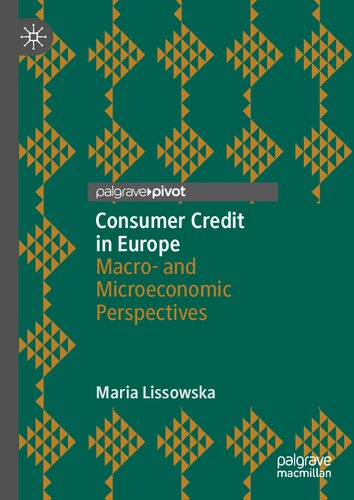

Most ebook files are in PDF format, so you can easily read them using various software such as Foxit Reader or directly on the Google Chrome browser.
Some ebook files are released by publishers in other formats such as .awz, .mobi, .epub, .fb2, etc. You may need to install specific software to read these formats on mobile/PC, such as Calibre.
Please read the tutorial at this link: https://ebookbell.com/faq
We offer FREE conversion to the popular formats you request; however, this may take some time. Therefore, right after payment, please email us, and we will try to provide the service as quickly as possible.
For some exceptional file formats or broken links (if any), please refrain from opening any disputes. Instead, email us first, and we will try to assist within a maximum of 6 hours.
EbookBell Team

4.7
46 reviewsThis book provides a comprehensive outlook on the state and role of consumer credits in the European economy and households. It underlines the role of consumerism and digitalisation, in the framework of legislation. It covers two major turns in consumer credit evolution: the 2008 crisis and Covid pandemic. The first had socio-economic sources, the second one was an external event, but provoked important changes in consumer behaviour. Lockdowns deepened the preference for digital financial products. FinTech and BigData operators acquired broader opportunities with the development of distance services.
These new financial services need adapted legislation. The recently published project of Consumer Credits Directive covers new means of communication, such as smartphones, and extends rules to new ways of crediting, like crowdfunding.
Consumer credit availability changed the behaviour of households. The propensity of poorer households to save faded due to the ease of getting credit. However, financial insecurity during the Coronavirus pandemic made households limit credits and build precautionary savings.